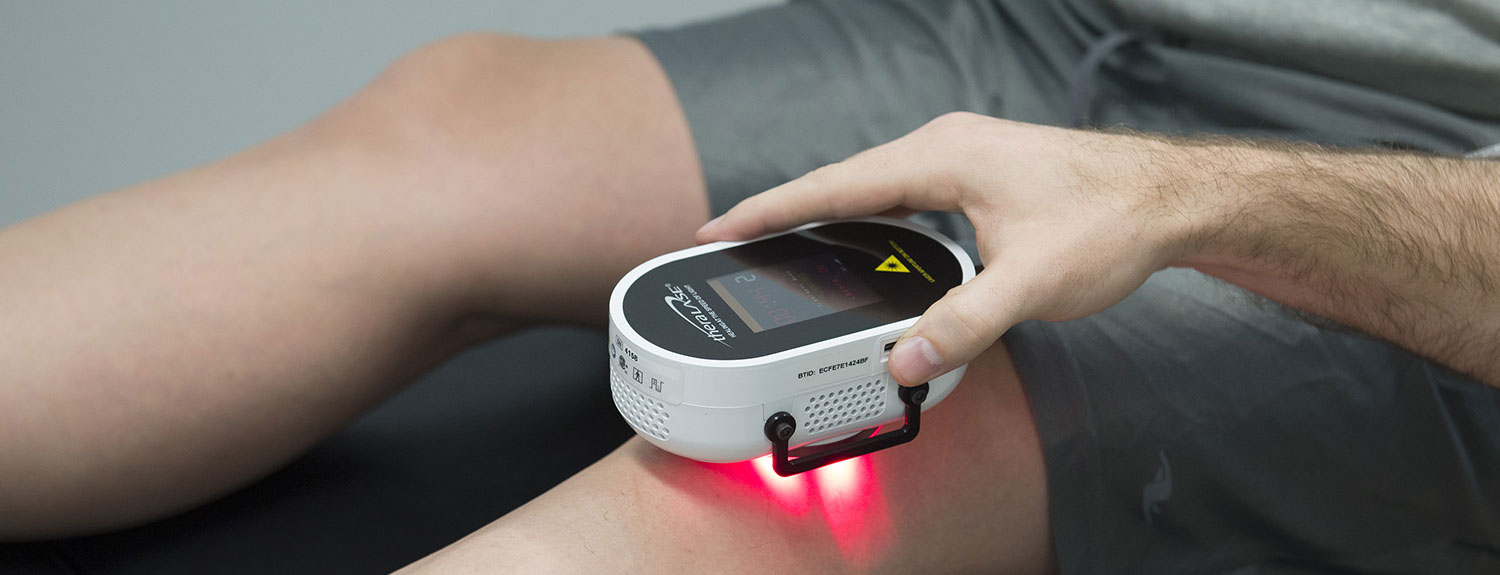History
Cold Laser Therapy (“CLT”) or treatment with light has been in existence since 1500 BC; where, Indian medical literature described a treatment combining herbs with natural sunlight to treat non-pigmented skin areas, known today as vitiligo. Buddhist literature from 200 AD and 10th century Chinese documents make similar references.1
As an analogy, just like the abacus eventually evolved into the computer, which has fundamentally changed the way humans live and work in today’s society (put up your hand if you can go a day without your smartphone), light therapy, using research from 3500 years ago, has evolved into CLT systems capable of delivering laser light at specific wavelengths (colours) and power levels to heal numerous nerve, muscle and joint conditions.
Benefits
As advancements in CLT technology have continued, millions of healthcare practitioners now rely on CLT systems daily in their clinics to treat a wide variety of conditions by: eliminating pain, reducing inflammation, and accelerating tissue healing. As CLT technology continues to improve and become more affordable, millions more healthcare practitioners will opt to purchase a Cold Laser system for their clinic to see what the countless healthcare practitioners before them have already discovered, that CLT systems are safe and effective in healing their patient’s conditions.


Cold Laser Therapy offers many benefits to healthcare practitioners; including: being extremely safe and effective (>90%) in the treatment of hundreds of nerve, muscle, and joint conditions, non-invasive, as compared to acupuncture or surgical interventions, provides results with a few treatments depending on the chronicity of the condition, can be used to treat all patients regardless of existing concomitant conditions, simple to implement, cost-effective with regard to both the practitioner and patient and is drug-free; hence, eliminates the complications and risks associated with long-term medication treatment programs, such as with opiate-related products.
CLT systems tend to be commonly used for treatments associated with: acute, subacute, and chronic joint pain, tendon strains, muscle strains, soft tissue injuries, tendonitis, arthritis, tennis elbow syndrome, spinal strains, bursitis, carpal tunnel syndrome, and fibromyalgia, to name a few.
CLT systems are generally employed in a “point and shoot” fashion; where, the CLT system is programmed based primarily on the patient’s condition and adjusted secondarily based on the patient’s physical characteristics (i.e.: skin colour, subcutaneous fat layer, muscle layer, etc.) then applied directly to the tissue surface for a given time and using a variety of locations around the condition to provide an effective treatment.
Mechanism of action
The latest and most advanced CLT systems employ only laser diodes and use pulsing and superpulsing drive frequencies to allow this laser light to penetrate much deeper below the skin surface than would be possible with a continuous wave approach. There are two main wavelengths of laser light that are most commonly employed to stimulate biological processes in mammalian cells; specifically; visible red laser light, preferably in the 660 nm range and Near Infrared (“NIR”) laser light preferably in the 905 nm range. The advantage of using red and NIR laser light is that they are able to penetrate fairly deeply through human tissue (up to 5” in tissue depth with some of the latest 905 nm technology), while still having sufficient electron volt energy to induce photochemical changes in mammalian cells.
Superpulsing 905 nm NIR technology is required to reach deep seated conditions, such as low back and hip pain, which often reside 4 to 5 inches below the tissue surface.
Pulsing visible red laser diodes, preferably in the 660 nm wavelength range offer the benefit of depositing laser energy to surface tissues.
By delivering visible red and NIR laser energy to tissue, photons of laser light are able to heal damaged cells, by biostimulation of the mitochondria to boost the production of Adenosine TriPhosphate“(“ATP”). The production of ATP increases cell energy and can be used to revitalize quiescent cells from a state connected with illness to a stable, thriving healthy state.
Overall CLT systems are an indispensable tool for the modern healthcare practitioner and is a wonderful complement to their practice, allowing the safe and effective treatment of numerous nerve, muscle, and joint conditions.